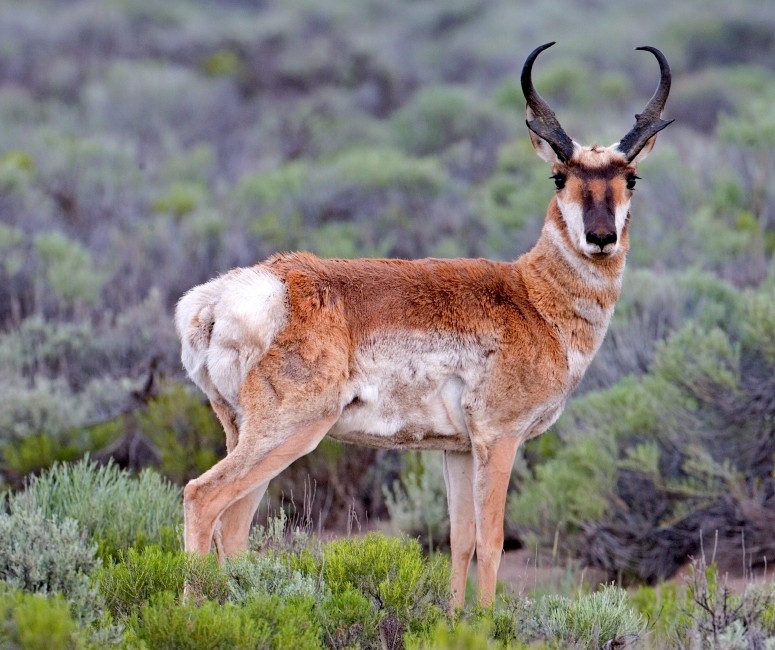
The Antilocapridae are a family of artiodactyls found in North America. The closest relation to this family is the Girrafidae family from Africa. Although this family is made up of 13 genera (and while you can count it in various ways, there are roughly 70 species that are extinct – many in the long past, but a few pushed to extinction since Europeans settled several hundred years ago).
The only species that has survived from this family is the Pronghorn antelope. Given this situation, I will treat this page as the Pronghorn antelope page, as well as the for the Antilocapridae – artiodactyls endemic to North America. 10 of these former genera were lost at the end of the ice age. Unfortunately, while the last 3 other genera (Capromeryx, Stockoceros and Tetrameryx) survived until humans arrived, but we killed them off.
The pronghorn is a species of artiodactyl (even-toed, hoofed) mammal living in the interior western and central North America. It looks rather like an antelope, and indeed is often referred to as by various names such as the American antelope, prong buck, pronghorn antelope and the prairie antelope. Perhaps to excuse the mistake further, they fill a similar niche in the ecosystem – its similar looks are likely to be as a result of parallel evolution, needing similar skills and shape to survive on the open plains of America, like the open plains of Asia, or Africa.
The pronghorn’s closest living relatives are the giraffe and okapi (Giraffidae). The Antilocapridae is part of the infraorder Pecora, making them distant relatives of giraffids, deers, bovids, and moschids (by clicking on these names you can look at our pages for these related families.
The Pronghorn is the fastest land mammal in the Western Hemisphere, reaching speeds of 88.5 km/h or 55mph. Indeed, it is the existence of this species which initially lead to the idea that the cheetah evolved in north America, and only then spread across Africa, Asia, the middle east and even parts of southern Europe.
There are 5 recognized subspecies of the Pronghorn (scientific name is the Antilocapra americana). These are
Antilocapra americana – pronghorn
- A. a. americana – Common pronghorn
- A. a. mexicana – Mexican pronghorn
- A. a. peninsularis – Baja California pronghorn
- A. a. sonoriensis – Sonoran pronghorn – this is not considered different enough from mexicana subspecies to justify its own subspecies so all sonoriensis populations should be considered Mexican pronghorn
- A. a. oregona – Oregon pronghorn – this is not considered different enough from americana so all populations of this subspecies should be considered the common pronghorn
While these subspecies have minor differences in colour, size or location, only 3 are genetically distinct enough to warrent the subspecies level. Indeed, there is much evidence for much genetic mixing between the subspecies happening naturally over time.
2 of the subspecies are considered endangered – The Sonoran pronghorn only has 200-500 (very large interval, which suggests lack of recent data) individuals left, and the Baja California peninsular pronghorn is numbered 150. Only the Mexican population is included in CITES, likely as a result of the USA government being against the listing the the Baja California population being listed. I am unsure where the line is for a species becoming critically endangered, but I would argue that both of these sub-species should be classed this way.
Currently, the total Pronghorn population is thought to number roughly 1,100,000 individuals, so as a while the pronghorn is not currently endangered.
Should there ever be any blogposts on this species it will appear below.
If you want to return to the Ruminants family page click here











